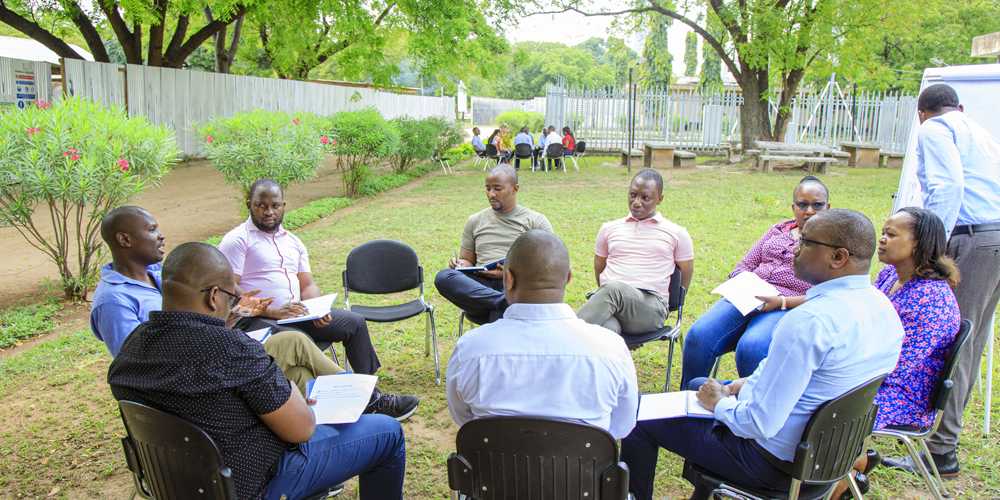"Now I know that innovation is possible and that collaboration is actually key to success"

Meet one of the participants in the Building Innovation Capabilities programme: Benedict Kuhenga Mahona from Tanzania.

Benedict Kuhenga Mahona works with Planning, Monitoring & Evaluation at the Public Service Social Security Fund (PSSSF) in Dodoma, Tanzania. He is also one of the participants in the Building Innovation Capabilities (BIC) training programme, initiated by the three universities Strathmore University in Kenya, University of Dar es Salaam in Tanzania, and KTH Royal Institute of Technology in Sweden. The funding for the training programme comes from the Swedish Institute.
When PSSSF decided to join the BIC training programme, the intention was to learn how to foster innovation, collaborate between industry, the universities and the government, and learn about sustainability and green innovation. Through the training, PSSSF came to understand that they needed to develop a comprehensive research and innovation policy for their organization. PSSSF will furthermore enter into a memorandum of understanding with UDSM to ensure that the policy is implemented. The MoU will also include other important areas of mutual interest borne out of the BIC project.
“Being a planner and researcher, I find this programme worthwhile since it enables me to be innovative and get new ideas. Innovation takes two parts: innovative ideas and implementation of these ideas. I enjoy these aspects of the programme”, Benedict says.
Points out the opportunities to collaborate
For him, it has been rewarding to get an understanding of how innovation is changing and learning more about the design thinking process since it gives a comprehensive idea of how innovation works.
“The most important insight for me has been that you cannot prosper if you stand alone, you need to collaborate with other partners. The fact that this programme is a collaboration between three universities in three different countries also makes the team very dynamic.” Benedict says.
He continues: “There is a saying that it takes a village to raise a child, and it actually takes an ecosystem to scale up an innovation. We need ideation, research and development, proof of concept, etc. When doing an innovation, you also need to think about how you can commercialize the solution, how to make it user-friendly, and how the innovation can lead to a solution that benefits society.”
Encourages innovation
The most challenging part of the programme has been finding enough time to work on the internal change project and other parts of the training programme.
“We need to work with our usual duties but also ensure that the project is implemented. We have been balancing that. The issue has also been to understand how we can collaborate between the institutions. For example, some people are afraid to sign MoUs assuming that it is like a contract. We however want to continue with the collaboration and work together on different projects in the future, and that is why we have decided to sign a MoU with UDSM”, Benedict says.
In the short term, this programme affects the skills and knowledge of the participants and creates awareness. In the long term, it will be easy for the involved organizations to apply the innovation tools to address societal challenges and collaborate with other organizations, according to Benedict.
He concludes: “At first, I thought innovation was very difficult, but now I know that innovation is possible and that collaboration is actually key to success.”

